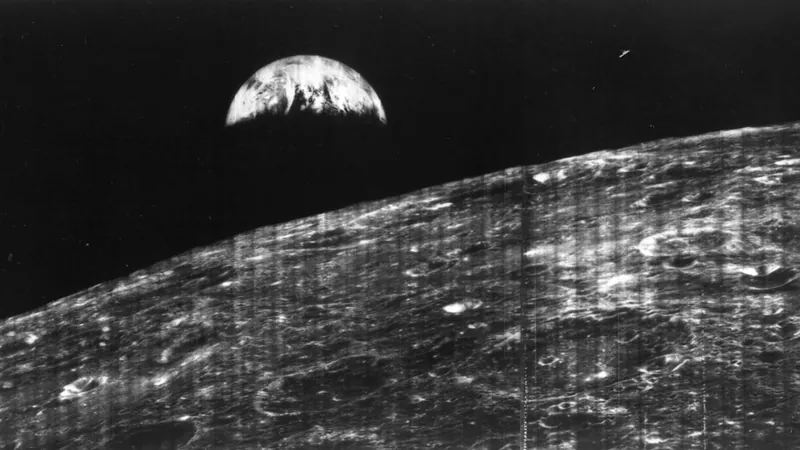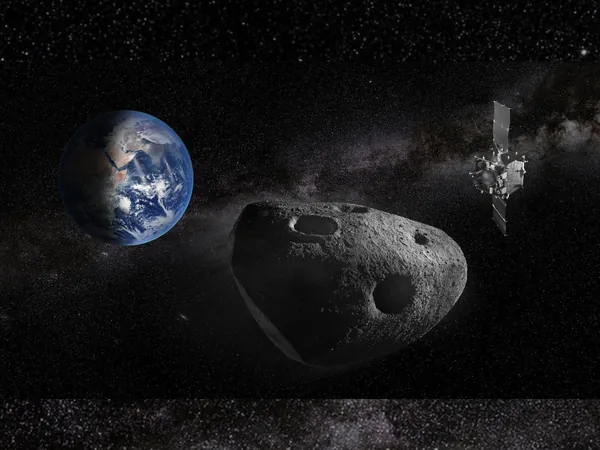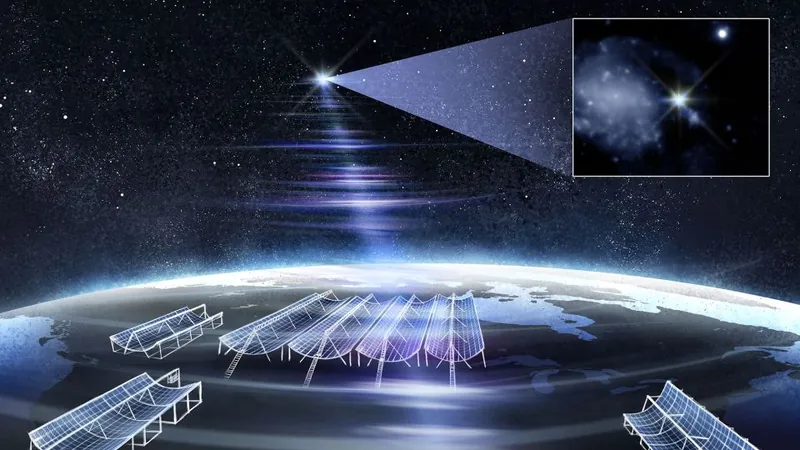
Relive the Iconic Moment: The Untold Story of 'Earthrise' 59 Years Later
2025-08-31
Author: Michael
This week marks a monumental milestone in space exploration as we celebrate the original photo of Earth taken from the moon, a breathtaking moment frozen in time 59 years ago.
On August 23, 1966, humanity caught its first glimpse of Earth from lunar orbit, a grainy black-and-white photograph captured by NASA's Lunar Orbiter 1. The image featured our planet as a shimmering crescent above the lunar horizon, an unexpected revelation as the spacecraft circled the moon.
A Historic Capture, Unplanned Yet Unforgettable
NASA describes this landmark image as completely unplanned. The Lunar Orbiter 1, launched on August 10, 1966, was on a mission to identify safe landing zones for future lunar landings when it made this serendipitous discovery. The spacecraft was propelled into lunar orbit just four days after its launch from Cape Canaveral, Florida.
Despite its simple design, the Orbiter's camera offered clearer views of the lunar landscape than any Earth-based telescope of the time could manage. This technological marvel was manufactured by Eastman Kodak and featured a sophisticated automated system that developed film, scanned images, and transmitted them back to Earth.
A Task with Purpose – But a Surprise Discovery!
The Lunar Orbiter 1's mission was primarily to photograph nine possible Apollo landing sites along with seven backup options. Each stunning capture served as crucial steps towards what would eventually become humanity's first steps on the Moon.
The Fateful Moment Captured
At 16:35 GMT on that historical day, the Orbiter snapped the image during its 16th orbit, just moments before disappearing into the shadows of the moon's far side. This snapshot would lay the foundation for the more famous 'Earthrise' photograph taken later.
The Legacy Continues: From Orbiter to Apollo 8
Two years later, on Christmas Eve 1968, the world was captivated by the color photo of 'Earthrise' taken by Apollo 8's Bill Anders. This iconic image not only became a cultural touchstone but also tied back to the earlier, groundbreaking images from the Lunar Orbiter.
As we commemorate this incredible achievement this week, we are reminded of humanity's continuous journey in unraveling the mysteries of the universe and the powerful perspective gains that come with it.









 Brasil (PT)
Brasil (PT)
 Canada (EN)
Canada (EN)
 Chile (ES)
Chile (ES)
 Česko (CS)
Česko (CS)
 대한민국 (KO)
대한민국 (KO)
 España (ES)
España (ES)
 France (FR)
France (FR)
 Hong Kong (EN)
Hong Kong (EN)
 Italia (IT)
Italia (IT)
 日本 (JA)
日本 (JA)
 Magyarország (HU)
Magyarország (HU)
 Norge (NO)
Norge (NO)
 Polska (PL)
Polska (PL)
 Schweiz (DE)
Schweiz (DE)
 Singapore (EN)
Singapore (EN)
 Sverige (SV)
Sverige (SV)
 Suomi (FI)
Suomi (FI)
 Türkiye (TR)
Türkiye (TR)
 الإمارات العربية المتحدة (AR)
الإمارات العربية المتحدة (AR)